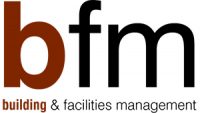Energy management and metering systems – what you need to consider

With energy costs continuing to rise and increasing levels of legislation to contend with, facility managers face a growing number of challenges. Cameron Steel reports on the key things to consider and the publications available that offer guidance.
Across all industry sectors, businesses use energy to carry out their everyday activities, from lighting and heating office spaces through to powering machinery and manufacturing processes. Power wasted adds no value, but improving energy efficiency can dramatically affect operating costs and productivity levels.
Energy costs can significantly impact on a business’ profit margin, but according to the Carbon Trust, simple measures can effectively reduce operating costs and energy bills by as much as 20 per cent.
The responsibility of improving operational energy efficiency often rests on the shoulders of facility managers. Therefore, they are looking for new ways that allow them to not only become more resource efficient, but also save money, meet corporate social responsibility goals and fulfil legal compliance requirements.
Developing a robust energy management policy
When it comes to developing a robust energy management policy, facility managers must start by gaining a good understanding of legislation. It is key to recognise which standards they need to consider and which definitions they must understand.
Legislation may appear to be little more than a burden to business, but the majority of them have been developed to encourage businesses to reduce energy consumption and carbon emissions, in turn improving energy efficiency and costs. There are several standards that deal with energy efficient systems and also a growing requirement underpinned by EU legislation to have an assessment of what energy use a business has. This will naturally evolve into showing how energy is being managed and if its use is being reduced.
Although current UK legislation doesn’t force organisations to act upon such assessments, it is a great opportunity for facility managers and the business in general to identify wasteful use of energy and projects that could lead to operating cost savings through more efficient use of energy.
A key operational standard for facilities managers is ISO 50001, which provides the basic framework and tools for energy management. Other documents from various organisations provide further guidance on key responsibilities, policy, strategy, planning, implementation and auditing. These include the IET Guide to Energy Management in the Built Environment, several Carbon Trust documents and publications from other organisations designed to ensure businesses are fully compliant with energy legislation, improve understanding of pricing structures and operational efficiencies and develop improved resilience.
With the knowledge such guides provide, facility managers can feel confident in developing a robust energy management policy and choosing the best possible system for their business.
The importance of energy metering
Metering is also a key component of any energy management programme. Knowing exactly where and when energy is used is vital in order to have its use analysed properly and improvements suggested.
An energy meter strategy is a fundamental part of this and understanding whether sub-metering is simply to keep an eye on the demands of certain key departments or whether there is fiscal charging required with energy bills for tenants.
Other higher specification meters for electrical systems can highlight inefficiencies caused by power factors and harmonics. Meters that can be connected to building information systems, such as building energy management systems (BEMS), can also provide real-time information on energy use, highlighting anomalies or irregular patterns of energy use.
For those with little experience of metering systems however, common issues can arise around ensuring a solution is fit for purpose and understanding meter readings. Thankfully, a number of guides and checklists are now available to help facilities managers navigate these murky waters, including the IET’s Guide to Metering Systems. This, amongst other things, runs through the key steps to applying non-fiscal metering systems as well as integration of metering data into management systems.
One size does not fit all
Energy management needs to be suitable for each organisation – one size certainly does not fit all. Every business is different and changes over time. Energy management plans need to be dynamic and constantly reviewed. The plans should be robust enough to cater for current needs and nimble enough to respond to changing demands too.
How energy management is undertaken within a business depends on the type of organisation and lifecycle of the installation. However, the heart of success lies in communication across the business.
The buck may stop with facility managers, but within the workplace we all have degrees of responsibility. Therefore, there is a growing need to increase the level of understanding and application of the term ‘energy management’ within organisations, and have buy-in from senior management and staff. This makes it possible to apply relevant good practice across the business and promote efficient and effective working practices.
To find out more about IET Standards publications developed to support facilities managers, please visit www.theiet.org/fm





